
News Directory
- 1. Introduction to Stainless Steel Ball Bearings
- 2. Types of Stainless Steel Ball Bearings
- 3. Advantages of Stainless Steel Ball Bearings
- 4. Applications of Stainless Steel Ball Bearings
- 5. How to Choose the Right Stainless Steel Ball Bearing
- 6. Maintenance and Care of Stainless Steel Ball Bearings
- 7. Common Problems and Troubleshooting
- 8. Future Trends in Stainless Steel Ball Bearings
- Conclusion
The Ultimate Guide to Stainless Steel Ball Bearings: Types, Applications, and Maintenance
1. Introduction to Stainless Steel Ball Bearings
Stainless steel ball bearings are essential components in countless industrial and mechanical applications, offering superior performance and longevity, especially in demanding environments. This section introduces the fundamental concepts of ball bearings and explains why stainless steel is often the material of choice.
What are Ball Bearings?
A ball bearing is a type of rolling-element bearing that uses balls to maintain the separation between two parts of a machine, typically a stationary ring (the outer ring) and a rotating ring (the inner ring). The primary function of a ball bearing is to reduce rotational friction and support both radial loads (perpendicular to the shaft) and axial loads (parallel to the shaft).
The fundamental components of a standard ball bearing are:
- Inner Ring (Race): Fits onto the shaft.
- Outer Ring (Race): Fits into the housing.
- Balls (Rolling Elements): Spherical elements that carry the load.
- Cage (Retainer): Separates and holds the balls at equal intervals.
- Shields or Seals (Optional): Protect the internal components from contaminants and retain lubricant.
Why Use Stainless Steel?
While standard bearings are often made from high-carbon chromium steel (like AISI 52100), stainless steel alloys (such as AISI 440C or AISI 304/316) are chosen for their unique properties that make them indispensable in specific operating conditions. The primary reason for using stainless steel is its exceptional corrosion resistance.
Stainless steel bearings are particularly beneficial when applications involve:
- Exposure to moisture, water, or steam.
- Contact with harsh chemicals, acids, or alkalis.
- Requirements for frequent wash-downs or sterilization.
- Operation in saltwater or marine environments.
The two most common stainless steel types used for bearings are Martensitic (like 440C) and Austenitic (like 304/316).
| Stainless Steel Type | Key Characteristic | Typical Bearing Components |
|---|---|---|
| Martensitic (e.g., 440C) | High Hardness, Magnetic | Rings and Balls |
| Austenitic (e.g., 304, 316) | Superior Corrosion Resistance, Non-Magnetic | Cages, Shields, and Seals |
Brief History and Evolution
The concept of reducing friction using rolling elements dates back centuries, with evidence of early roller bearings found in ancient Roman ships.
- 1500s: Leonardo da Vinci is credited with sketching an early design for a ball bearing to reduce friction.
- 1794: The first patent for a ball-and-race mechanism was issued to Welsh inventor Philip Vaughan.
- Late 19th Century: The modern ball bearing, featuring hardened steel balls and races, was developed and refined, largely driven by the needs of the bicycle industry.
- Early 20th Century: The demand from the nascent automotive industry spurred mass production and standardization of bearing sizes and materials.
- Post-WWII to Present: The evolution of stainless steel alloys and advanced manufacturing techniques (like precision grinding and heat treatment) has allowed for the creation of high-precision stainless steel ball bearings capable of operating reliably in extreme and highly corrosive environments, marking a significant step in material science application for bearing technology.
2. Types of Stainless Steel Ball Bearings
Stainless steel ball bearings come in several configurations, each designed to handle specific types of loads and operating conditions. Choosing the correct type is crucial for maximizing performance and bearing life.
Deep Groove Ball Bearings
- Description: This is the most common and widely used type of rolling bearing. They feature deep, uninterrupted raceway grooves, which closely conform to the shape of the balls.
- Load Capacity: Excellent balance of radial and axial load capacity in both directions. They are primarily designed for radial loads but can handle moderate axial loads.
- Speed: Suitable for high speeds.
- Application: General purpose use where simplicity and low cost are prioritized, such as electric motors, gearboxes, and home appliances.
- Stainless Steel Use Case: Used frequently in the food processing industry (e.g., mixers, conveyors) due to their high demand for wash-down resistance and low maintenance.
Angular Contact Ball Bearings
- Description: These bearings have raceways that are offset relative to each other, allowing them to accept combined loads (both radial and axial). They are typically mounted in pairs or groups to handle axial loads in both directions.
- Load Capacity: Excellent for supporting high axial loads in one direction, combined with moderate radial loads. The contact angle determines the ratio of radial to axial load capacity (a larger angle handles more axial load).
- Speed: Suitable for high-speed and high-precision applications.
- Application: Pumps, compressors, machine tool spindles, and precision instrumentation.
- Stainless Steel Use Case: Preferred in high-precision aerospace or chemical pump applications where corrosive fluids are present and high running accuracy is required.
Self-Aligning Ball Bearings
- Description: These bearings have two rows of balls and a single, common, spherical raceway in the outer ring. This design allows the inner ring and ball set to pivot within the outer ring.
- Load Capacity: Primarily for radial loads. They have lower axial load capacity compared to deep groove bearings.
- Key Feature: Their main advantage is their ability to compensate for angular misalignment between the shaft and the housing, which can occur due to mounting errors or shaft deflection.
- Application: Conveyors, textile machinery, and printing presses where alignment issues are common.
- Stainless Steel Use Case: Excellent for harsh mining or construction environments where housing distortion and moisture are concerns.
Thrust Ball Bearings
- Description: Designed specifically to handle loads acting purely along the shaft (axial loads). They consist of two ring-shaped washers (shaft washer and housing washer) with balls separated by a cage between them.
- Load Capacity: Designed for pure axial loads only. They cannot support any significant radial load.
- Types: Available as Single-Direction or Double-Direction depending on the axial load requirement.
- Application: Turntables, machine tool tailstocks, and screw-jack mechanisms.
- Stainless Steel Use Case: Critical for marine propeller shafts or large outdoor vertical pumps, where the thrust load is high and corrosion resistance to water or salt spray is vital.
Miniature Ball Bearings
- Description: Bearings with a bore diameter of less than 10 mm. They are typically deep groove bearings, often with very thin rings.
- Load Capacity: Lower load capacity overall due to their small size, handling light to moderate radial and axial loads.
- Speed: Capable of very high speeds.
- Key Feature: Compact size for fitting into small, intricate assemblies.
- Application: Robotics, medical devices (e.g., dental drills), precision instruments, and small motors.
- Stainless Steel Use Case: Essential in sterile environments like medical equipment or in precision electronic devices where small size and resistance to cleaning agents are required.
| Bearing Type | Primary Load Type | Misalignment Compensation | Typical Stainless Steel Alloy Used (Rings/Balls) |
|---|---|---|---|
| Deep Groove | Radial (moderate Axial) | None | AISI 440C, AISI 304/316 |
| Angular Contact | Combined (High Axial) | None | AISI 440C |
| Self-Aligning | Radial (low Axial) | High | AISI 440C (with 304 cage) |
| Thrust | Pure Axial | None | AISI 440C (with 316 washers) |
| Miniature | Radial and Axial (Light) | None | AISI 440C |
3. Advantages of Stainless Steel Ball Bearings
The decision to use stainless steel for ball bearings is driven by several key benefits that outperform standard chrome steel in specific, challenging operating conditions. These advantages ensure greater reliability, reduced downtime, and lower total cost of ownership in specialized applications.
Corrosion Resistance: Key Benefit for Harsh Environments
This is the most critical advantage. Stainless steel contains a minimum of $10.5%$ chromium, which reacts with oxygen to form a thin, protective, and self-healing passive layer of chromium oxide on the surface.
- Resistance to Moisture: They withstand exposure to water, humidity, and steam without rusting, making them ideal for applications involving wash-downs.
- Chemical Stability: They resist degradation from many acids, alkalis, and cleaning agents frequently used in the food and pharmaceutical industries.
- Saltwater Immunity: Austenitic stainless steels (like AISI 316) offer superior resistance to chlorides and pitting corrosion in marine applications and near-shore environments.
High Temperature Resistance: Performance in Extreme Heat
While all bearings are affected by temperature, stainless steel alloys maintain their material properties and hardness better than standard bearing steel (AISI 52100) at elevated temperatures.
- Stainless steel bearings can operate continuously at temperatures up to 250 (482F), depending on the specific alloy and lubrication used.
- This makes them suitable for use in ovens, furnaces, heat exchangers, and other high-heat processing equipment where conventional bearings would rapidly lose hardness and fail.
Hygienic Properties: Suitable for Food and Medical Industries
The smooth, non-porous, and corrosion-resistant surface of stainless steel is inherently hygienic and easy to clean.
- It does not harbor bacteria or contaminants and can be subjected to harsh sterilization processes (like autoclaving or chemical sanitization).
- The material is non-contaminating, which is a regulatory requirement for equipment in direct contact with food, beverages, or pharmaceuticals.
Low Maintenance: Reduced Downtime and Costs
Due to their superior resistance to environmental factors, stainless steel bearings often require less rigorous maintenance and replacement schedules.
- Extended Lubricant Life: Their inherent corrosion resistance helps prevent the ingress of corrosive contaminants that rapidly degrade grease or oil.
- Reduced Failure Rate: Their durability in harsh conditions translates to fewer premature failures, leading to significant reductions in downtime and replacement labor costs.
Load Capacity: Ability to Handle Different Loads
While standard chrome steel generally offers the highest static and dynamic load ratings due to its superior hardness (like AISI 52100), specialized martensitic stainless steels (like AISI 440C) are designed to be heat-treatable to achieve high hardness comparable to conventional bearing steel.
- AISI 440C: This alloy provides an optimal balance, delivering high corrosion resistance while maintaining the necessary load-carrying capacity and wear resistance for demanding industrial applications.
| Advantage Category | Specific Benefit | Typical Application Example |
|---|---|---|
| Corrosion Resistance | Withstands constant water exposure and chemicals | Bottling and canning lines |
| High Temp Resistance | Maintains structural integrity in heat | Industrial bakery ovens |
| Hygienic Properties | Allows for strict sterilization/wash-downs | Pharmaceutical mixers and fillers |
| Low Maintenance | Extends service life in hostile environments | Marine winch systems |
| Load Capacity | Supports heavy loads while resisting rust | Chemical pump motors |
4. Applications of Stainless Steel Ball Bearings
The specialized properties of stainless steel ball bearings—particularly their exceptional corrosion resistance and hygienic qualities—make them the material of choice for demanding applications across diverse industries where standard chrome steel would quickly fail.
Food and Beverage Industry: Hygiene and Sanitation
This sector is one of the primary users of stainless steel bearings due to strict health and safety regulations.
- Requirement: Equipment requires frequent high-pressure wash-downs with hot water, steam, and caustic chemicals to maintain sanitation. Standard bearings would rust almost immediately.
- Use Cases: Conveyor systems (bottling lines, packaging), mixers, blenders, freezing equipment, and automated cutting machinery.
- Material Preference: AISI 316 stainless steel is often preferred for components exposed to the product or harsh cleaning agents because it offers superior resistance to chloride-induced corrosion (pitting).
Medical and Pharmaceutical: Sterility Requirements
The need for high precision and absolute sterility drives the use of stainless steel in this field.
- Requirement: Equipment must withstand autoclaving (sterilization using high-pressure steam and heat) and resist various chemical disinfectants. Non-magnetic properties (using austenitic stainless steel) are also sometimes required for MRI or specialized diagnostic machinery.
- Use Cases: Surgical instruments, dental drills (often using miniature stainless steel bearings), laboratory centrifuges, and pharmaceutical bottling/filling lines.
Marine Applications: Saltwater Resistance
The combination of moisture, high humidity, and highly corrosive salt makes standard steel bearings unsuitable for long-term use in this environment.
- Requirement: Resistance to salt spray, saltwater immersion, and marine atmosphere.
- Use Cases: Fishing reel assemblies, deck machinery, rudder support systems, sailboat rigging mechanisms, and outdoor navigation equipment.
- Material Preference: AISI 316 is mandatory here due to its high resistance to the pitting caused by chlorides in seawater.
Automotive Industry: Durability and Performance
While standard bearings are common, stainless steel is used in specific areas exposed to environmental or chemical stressors.
- Requirement: Durability under harsh road conditions (salt, water, mud) and resistance to automotive fluids (brake fluid, coolants).
- Use Cases: Wheel bearings in regions that heavily salt roads in winter, cooling pump bearings, and components within the fuel system or exhaust control where high temperatures and corrosive condensation are present.
Aerospace Industry: Reliability Under Stress
Stainless steel bearings are chosen for their reliability in fluctuating, extreme environments.
- Requirement: High strength-to-weight ratio, resistance to extreme temperature changes, and excellent performance in areas exposed to weather, de-icing fluids, or specialized fuels.
- Use Cases: Actuators for flight control surfaces, landing gear mechanisms, and systems that must operate reliably in high-altitude environments where moisture and cold are factors.
Other Industries: Chemical, Electronics, etc.
The versatility of stainless steel extends its use to highly specialized industrial niches.
- Chemical Processing: Used in pumps, valves, and agitators that handle corrosive chemicals and high-purity media.
- Electronics/Semiconductors: Needed in manufacturing equipment where high levels of cleanliness are critical and where exposure to etching chemicals or de-ionized water is common.
- Textile Industry: Components exposed to dyes, washing agents, and high humidity benefit from stainless steel’s corrosion resistance.
| Industry | Primary Environmental Challenge | Bearing Type/Alloy Focus |
|---|---|---|
| Food & Beverage | Wash-downs, steam, chemicals, constant moisture | Deep Groove (AISI 316), Sealed |
| Marine | Saltwater, high humidity, chloride pitting | Deep Groove, Angular Contact (AISI 316) |
| Medical/Pharma | Autoclaving, disinfectants, need for sterility | Miniature, Deep Groove (AISI 440C/316) |
| Chemical | Corrosive media (acids/alkalis), high heat | Angular Contact, Thrust (AISI 316) |
| Automotive | Road salt, moisture, brake fluids, coolants | Deep Groove (AISI 440C) |
5. How to Choose the Right Stainless Steel Ball Bearing
Selecting the correct stainless steel ball bearing requires a careful assessment of the operational demands and environmental factors to ensure maximum service life and performance. A bearing that is oversized wastes money, while an undersized or incorrectly specified bearing will fail prematurely.
Load Requirements: Radial and Axial Loads
The type and magnitude of the load are the most fundamental factors in selection.
- Radial Load: Acts perpendicular to the shaft (e.g., the weight of a pulley). Most ball bearings are designed to handle this.
- Axial Load: Acts parallel to the shaft (thrust load).
- Selection Criteria:
- High Pure Radial Load: Deep Groove or Self-Aligning bearings.
- High Pure Axial Load: Thrust Ball Bearings.
- Combined Radial and High Axial Loads: Angular Contact Ball Bearings.
- Material: Ensure the chosen stainless steel alloy (e.g., 440C) provides the required **Basic Dynamic Load Rating ** for the application life calculation.
Speed Requirements: RPM and Dynamic Load
The rotational speed (revolutions per minute, RPM) affects temperature, vibration, and required lubrication.
- Speed Rating: Bearings have a maximum permissible speed (or reference speed) depending on their size, cage material, and lubrication method.
- Dynamic Load: Higher speeds generate more centrifugal force on the balls, increasing wear. Ensure the bearing type is suited for high-speed operation (e.g., Deep Groove and Angular Contact are generally preferred over Thrust bearings for high speed).
Operating Temperature: Consider High or Low Temps
The ambient and running temperatures significantly impact the choice of bearing material and, crucially, the lubricant and cage material.
- High Temperatures: Require specialized, high-temperature stainless steel (e.g., 440C, which resists softening better than chrome steel) and lubricants like synthetic oils or high-temp greases. Plastic cages (polyamide) can soften or degrade above 120 (250F), necessitating metal cages (steel or brass).
- Low Temperatures: May require specialized lubricants that maintain viscosity and fluidity without stiffening.
Environmental Conditions: Corrosive or Clean Environments
The level of contamination determines the required seals, shields, and the specific stainless steel alloy.
- High Corrosion/Wash-down: AISI 316 stainless steel for rings and balls is ideal for maximum chemical and saltwater resistance. Use highly effective seals (2RS) to keep contaminants out and lubricant in.
- Moderate Corrosion/High Load: AISI 440C offers the best balance of hardness, load capacity, and corrosion resistance.
- Contaminants: If high levels of dust or abrasive particles are present, sealed bearings and robust lubrication are essential.
Size and Space Constraints: Dimensions and Fitting
The bearing must fit the available space and connect correctly to the shaft and housing.
- Dimensions: Standardized dimensions (Bore (d), Outer Diameter (D), Width (B)) must match the design envelope.
- Fit: Proper internal clearance and the fit tolerances (interference fit vs. loose fit) on the shaft and in the housing are crucial to prevent creep, noise, and premature failure.
Precision Requirements: ABEC Ratings
For applications demanding high rotational accuracy, specific precision grades are required.
- ABEC (Annular Bearing Engineers’ Committee) Rating: This scale defines the tolerance and precision of a bearing, ranging from ABEC 1 (lowest precision) to ABEC 9 (highest precision).
- High Precision: Required for applications like medical drills, machine tool spindles, and precision instrumentation. These applications typically specify ABEC 5, 7, or 9 stainless steel bearings.
| Selection Factor | Key Considerations | Impact on Selection |
|---|---|---|
| Load Requirements | Combined Load | Determines Bearing Type (Deep Groove, Angular Contact, Thrust) |
| Speed Requirements | RPM, Lubrication Type | Influences Cage Material and Lubricant Viscosity |
| Operating Temperature | High Heat, Low Temp | Affects Stainless Steel Alloy (440C vs 316) and Cage Material (Steel vs Plastic) |
| Environmental Conditions | Saltwater, Chemicals, Dust, Moisture | Dictates Alloy Type (440C vs 316) and Sealing Arrangement (Shields vs Seals) |
| Precision | Running Accuracy (TIR) | Specifies ABEC Rating (e.g., ABEC 5 or 7) |
6. Maintenance and Care of Stainless Steel Ball Bearings
Proper maintenance is crucial for maximizing the service life and reliability of stainless steel ball bearings, even though they inherently offer greater durability in corrosive environments. Neglecting these steps can lead to premature failure, regardless of the material.
Lubrication: Grease or Oil Selection
Lubrication is the most vital aspect of bearing maintenance, as it reduces friction, dissipates heat, and prevents wear.
- Grease Lubrication: Most common for ball bearings. Grease is a mixture of a lubricating oil and a thickener.
- Selection: For stainless steel, choose lubricants that are compatible with the specific operating environment.
- Food/Pharma: Requires NSF H1 certified (Food Grade) grease.
- High Temp: Requires synthetic greases or specialized high-temperature polyurea greases.
- Wet Environments: Requires a grease with good water wash-out resistance and corrosion inhibitors.
- Selection: For stainless steel, choose lubricants that are compatible with the specific operating environment.
- Oil Lubrication: Used for very high-speed, high-temperature, or high-precision applications.
- Re-lubrication Intervals: This frequency depends on factors like speed, temperature, load, and bearing size. The interval should be determined using standard calculations or manufacturer recommendations and adjusted based on real-world monitoring.
Cleaning: Proper Cleaning Techniques
Stainless steel bearings often require cleaning due to the environments they operate in (e.g., food processing wash-downs or chemical exposure).
- During Installation: Ensure the shaft and housing are perfectly clean before mounting.
- In Service: For sealed or shielded bearings, cleaning is generally limited to the exterior surfaces.
- Open Bearings: If cleaning is necessary, use specific, non-corrosive solvents (avoiding harsh chlorinated solvents that can damage seals) and ensure the bearing is thoroughly dried and immediately re-lubricated. Never spin a bearing with compressed air while cleaning, as this can cause etching or damage the raceways.
Inspection: Regular Checks for Wear and Tear
Routine inspection helps detect potential issues before they escalate into catastrophic failures.
- Visual Inspection: Look for signs of rust, discoloration (due to overheating), denting, or cracked cages/rings. Pay close attention to the integrity of the seals or shields.
- Vibration and Noise Analysis: Use handheld sensors or integrated monitoring systems to track changes in vibration levels or listen for unusual noise (e.g., grinding, clicking, squealing). Sudden changes often indicate lubricant failure or impending mechanical damage.
- Temperature Monitoring: Excessive heat is a common indicator of lubrication problems or overloading.
Replacement: When to Replace Bearings
Replacement should occur either based on a predictive maintenance schedule or when signs of imminent failure are detected.
- L10 Life: Bearings are often replaced after they have reached their calculated life (the number of revolutions or operating hours that 90% of a group of identical bearings will achieve or exceed).
- Failure Indicators: Replace immediately if vibration/noise levels spike, excessive temperature is noted, or if there is visible physical damage like heavy pitting or cracking.
Storage: Best Practices for Storing Bearings
Proper storage ensures the bearings are in pristine condition when installed.
- Environment: Store in a cool, dry environment with consistent temperature and low humidity. Even stainless steel can corrode if stored in excessively damp or chemically active atmospheres.
- Packaging: Keep bearings in their original, sealed packaging until the moment of installation. This protects them from dust, moisture, and corrosion.
- Position: Store bearings flat, and avoid stacking heavy objects on top, which could induce false brinelling (denting of the raceways).
7. Common Problems and Troubleshooting
Even with high-quality stainless steel ball bearings, operational issues can occur. Identifying the root cause of these problems quickly is essential for effective troubleshooting and preventing catastrophic machine failure.
Noise: Identifying the Source of Noise
Abnormal noise is often the first sign of a bearing problem. The type of sound can help pinpoint the issue:
- Grinding or Clicking: Often caused by contamination (dirt, metal chips, or hard particles) trapped in the raceways.
- Troubleshooting: Inspect seals for damage. Dismantle, clean the bearing carefully, check the lubricant for particles, and re-lubricate.
- Squealing or Chirping: Typically indicates inadequate or depleted lubrication (dry running).
- Troubleshooting: Check the lubrication level and condition. Re-lubricate immediately with the correct type and amount of grease or oil.
- Rumbling or Knocking: Can indicate raceway damage (e.g., pitting, fluting, or corrosion) or overloading.
- Troubleshooting: Replace the bearing. Check the load specifications of the application to ensure the replacement is rated correctly.
Vibration: Causes and Solutions
Excessive vibration accelerates fatigue and wear. It is usually measured using vibration analysis equipment.
- Causes:
- Imbalance or Misalignment: The shaft or coupling may be bent or out of alignment.
- Faulty Installation: A loose fit on the shaft or a tight fit in the housing can induce undue stress.
- Internal Damage: Fluting (electrical damage), corrosion, or surface irregularities.
- Solutions:
- Use precision tools (e.g., laser alignment equipment) to correct shaft alignment.
- Check mounting tolerances to ensure the correct shaft and housing fits.
- Replace bearings showing signs of damage.
Overheating: Preventing Overheating
High operating temperature shortens bearing life by degrading the lubricant and reducing the hardness of the stainless steel components.
- Causes:
- Excessive or Incorrect Lubrication: Too much grease causes churning, generating heat. Too little lubrication causes metal-on-metal friction.
- Overloading: Operating beyond the bearing’s calculated dynamic load capacity.
- Tight Fits/Reduced Clearance: An overly tight fit reduces the internal clearance needed for operation.
- Solutions:
- Measure Lubricant: Use the correct amount of lubricant.
- Check Load: Ensure the bearing is not being overloaded.
- Verify Internal Clearance: Confirm that the correct clearance (C3, C4, etc.) was used for the operating condition.
Premature Failure: Understanding Reasons for Failure
Premature failure means a bearing did not achieve its calculated $L_{10}$ life. The causes are usually mechanical or environmental.
| Failure Symptom | Primary Cause | Troubleshooting Action |
|---|---|---|
| Pitting/Spalling | Material fatigue due to overloading or inadequate life calculation. | Replace with a bearing with a higher load rating. |
| Corrosion/Rust | Ingress of water, moisture, or corrosive chemicals. | Upgrade to a higher corrosion-resistant alloy (e.g., 316) and install better seals. |
| Brinelling (Dent Marks) | Severe shock load or improper installation using a hammer. | Use proper mounting tools and verify shock loads are within limits. |
| Fluting/Etching | Electrical discharge passing through the bearing. | Install grounding brushes or use ceramic balls (hybrid bearings) for electrical insulation. |
8. Future Trends in Stainless Steel Ball Bearings
The future of stainless steel ball bearings is focused on enhanced materials, integration of digital technology, and sustainability in manufacturing.
Advanced Materials: New Stainless Steel Alloys
Manufacturers are continuously developing proprietary stainless steel alloys to push the limits of bearing performance.
- Higher Hardness/Corrosion Balance: Research aims to create new martensitic alloys that match the hardness of 52100 steel while offering the superior corrosion resistance of 440C or better.
- Hybrid Ceramic Bearings: Using stainless steel rings with ceramic (Silicon Nitride, Si3N4) balls. Ceramic balls offer extremely low friction, non-conductivity (eliminating fluting), and higher speed capabilities, which is crucial for high-speed industrial motors.
Smart Bearings: Integrated Sensors and Monitoring
The integration of sensors into bearing units is a key part of the Industrial Internet of Things (IIoT).
- Condition Monitoring: Smart bearings are equipped with embedded sensors that continuously measure temperature, vibration, and speed.
- Predictive Maintenance: This real-time data allows for predictive maintenance by alerting operators to potential failures before they occur, maximizing uptime and optimizing maintenance scheduling.
Sustainable Manufacturing: Eco-friendly Practices
The industry is moving towards more environmentally responsible production methods.
- Reduced Waste: Optimizing machining processes to minimize material scrap.
- Energy Efficiency: Implementing manufacturing techniques that require less energy.
- Extended Life Lubrication: Developing highly effective, long-lasting lubricants that reduce the need for frequent re-lubrication and disposal.
Conclusion
The selection of stainless steel ball bearings is a strategic decision driven by the necessity of corrosion resistance and hygienic performance in demanding applications like food processing, marine, and medical environments. By understanding the different types (Deep Groove, Angular Contact, etc.), adhering to strict selection criteria (load, speed, environment), and implementing rigorous maintenance schedules (especially lubrication and cleaning), companies can ensure the longevity and reliability of their critical machinery. The ongoing innovation in advanced stainless steel alloys and the introduction of smart bearing technology will continue to expand the crucial role of these components in future industrial automation.



 English
English 中文简体
中文简体 عربى
عربى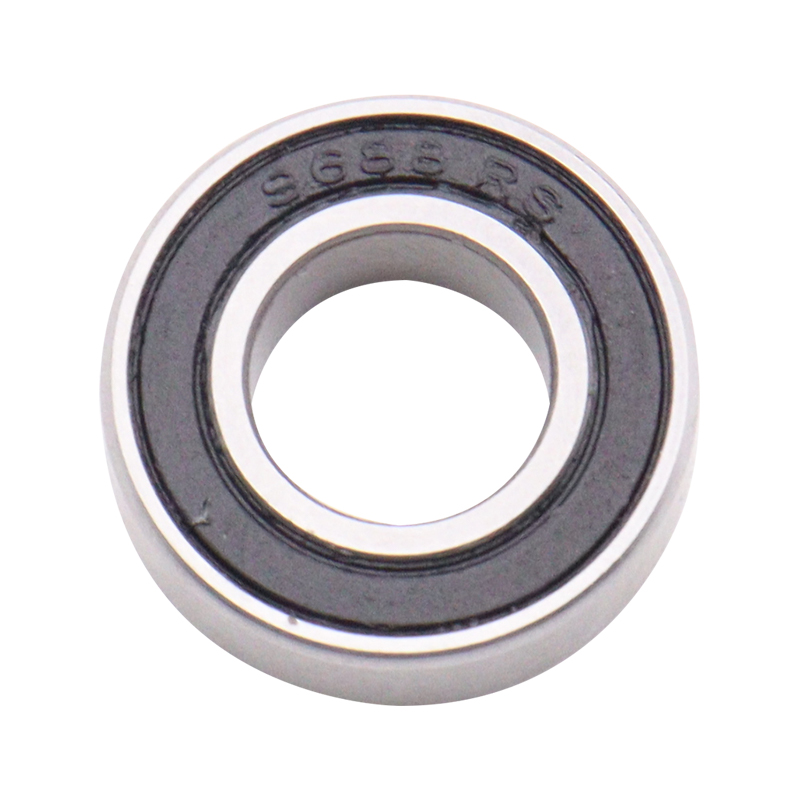
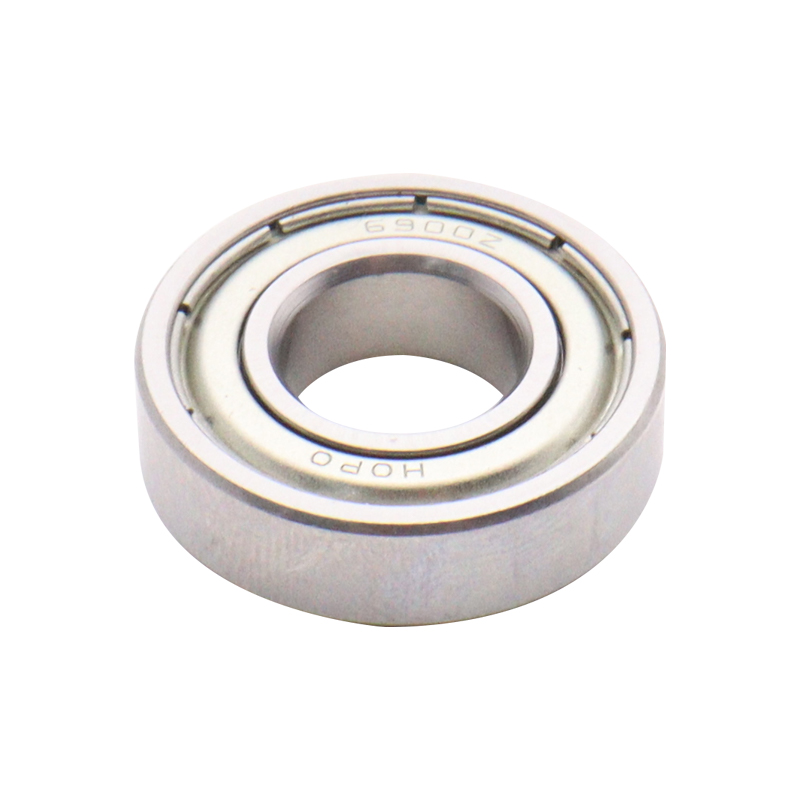
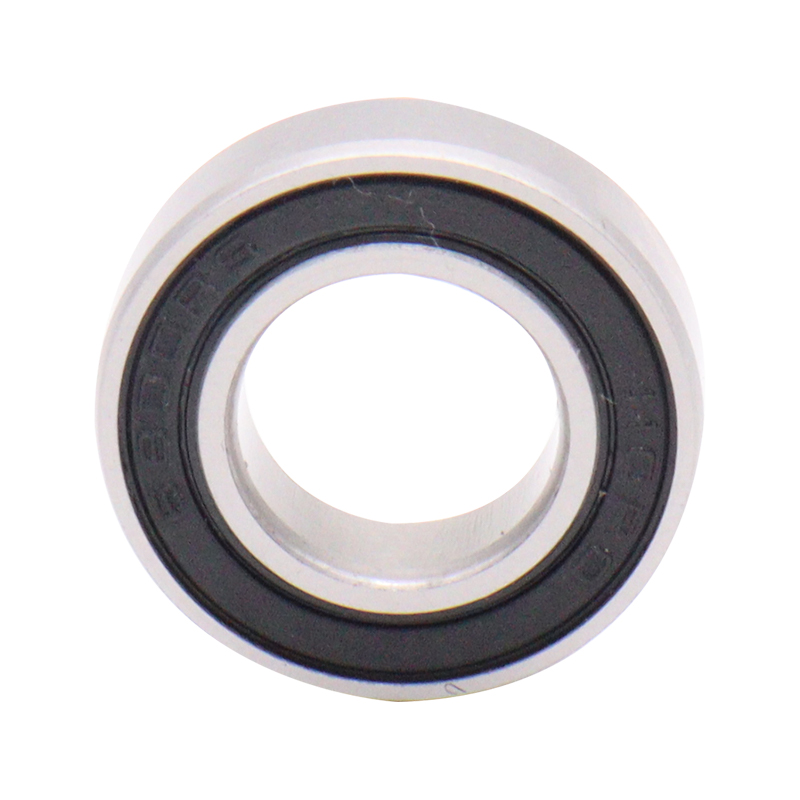

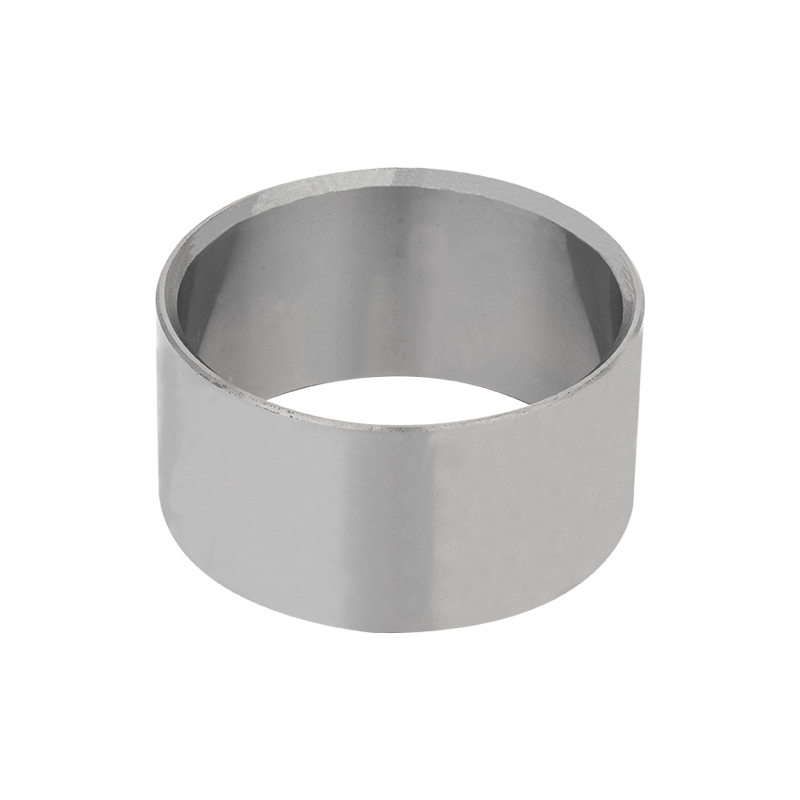


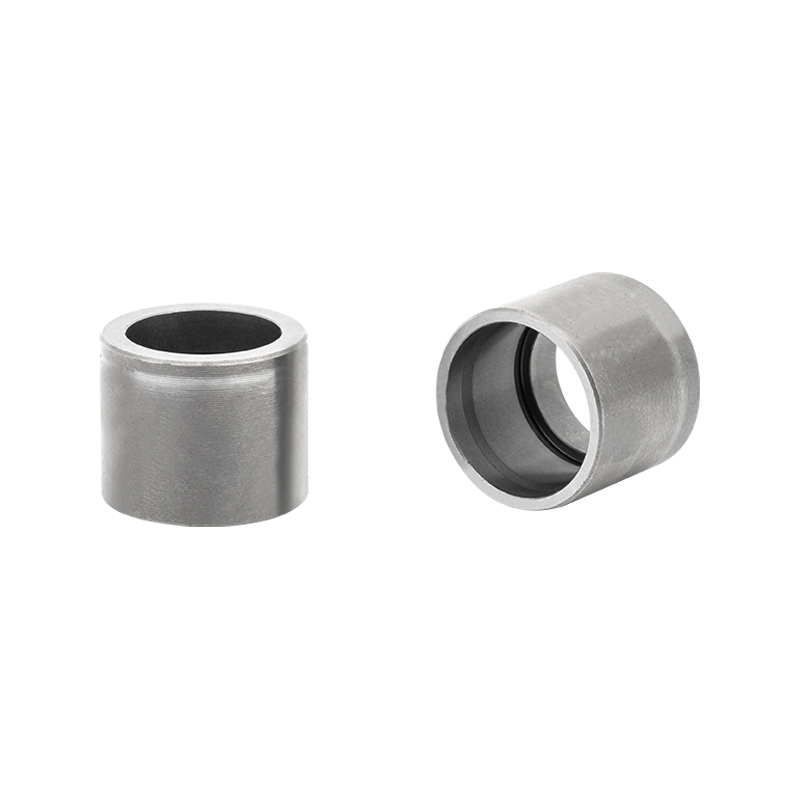
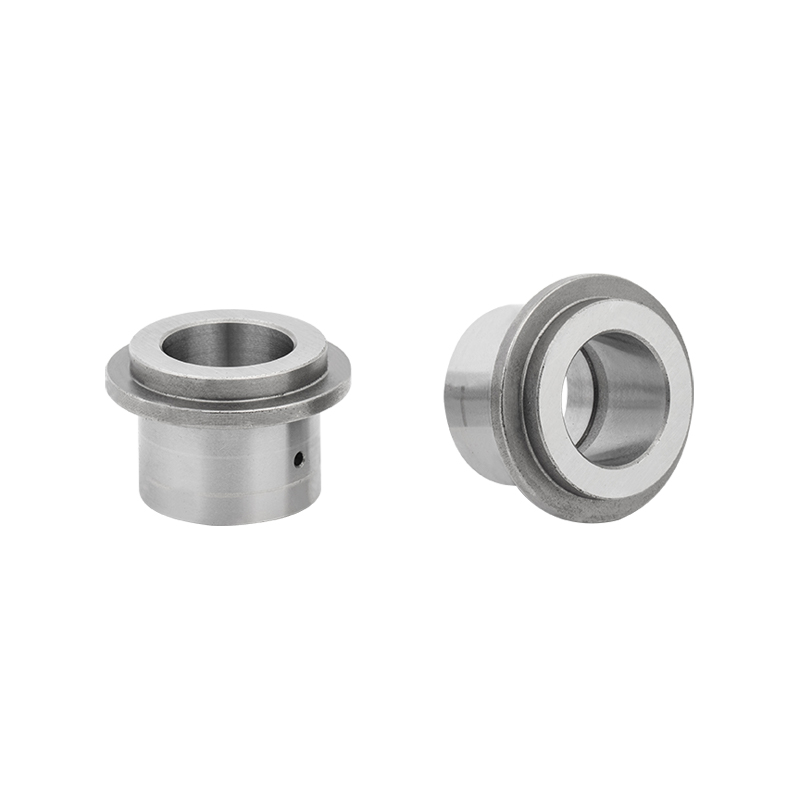

 Download Catalog
Download Catalog
